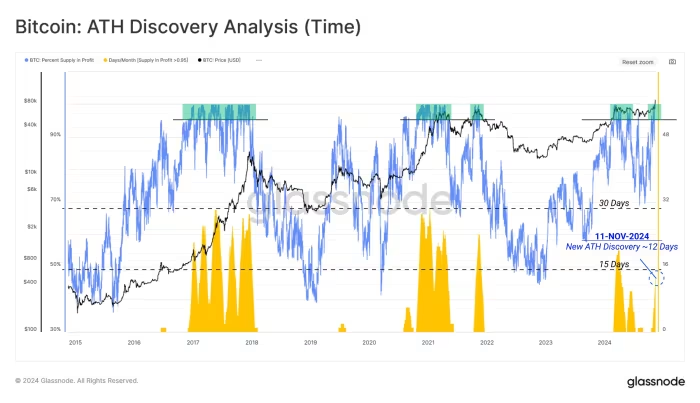“Will Bitcoin drop again?” It’s a question on the minds of investors, traders, and crypto enthusiasts alike. Bitcoin has seen dramatic highs and lows since its inception, with each fluctuation driven by a mix of market sentiment, global economic factors, and technological shifts. To understand whether Bitcoin will drop again, it’s crucial to assess the market conditions and factors influencing Bitcoin’s price.
Understanding Bitcoin’s Volatility
Bitcoin’s price is inherently volatile. While its decentralized nature and limited supply contribute to its appeal, external factors like regulatory announcements, economic policies, and global events heavily influence its valuation. For instance, a recent crypto market correction followed a short-lived price surge, leaving Bitcoin trading below $87,000. This highlights how quickly sentiment can shift within the cryptocurrency market.
Volatility can be an opportunity for some, but for many, it underscores the risk of investing in cryptocurrencies. To address the question of Bitcoin dropping again, we need to look at the key factors currently at play.
Key Factors That Could Influence Bitcoin’s Price Drop
1. Macroeconomic Conditions
Global economic shifts play a pivotal role in crypto prices. For instance, rising interest rates or tariff impositions can drive investors away from riskier assets like Bitcoin. Recently, concerns over impending U.S. tariffs on major trading partners created uncertainty in financial markets, contributing to Bitcoin’s decline alongside other risk assets.
2. Regulatory Impact
Government regulations remain one of the most significant factors influencing Bitcoin’s price. While some nations see Bitcoin’s potential and work towards adopting favorable policies, others impose strict measures to curb its use. Upcoming regulations or compliance measures could exert downward pressure on Bitcoin prices if investors feel uncertain about crypto’s future.
3. Market Sentiment
Market sentiment has a direct impact on Bitcoin’s value. Events such as announcements from influential figures or companies can drive prices up or down in a matter of hours. For example, the recent announcement of a potential U.S. crypto reserve initially boosted Bitcoin prices, but gains were quickly erased as broader market unease set in.
4. Crypto Market Correlation
Bitcoin often leads the crypto market, but its price is also tied to the performance of other cryptocurrencies. A significant drop in major altcoins like Ethereum or Ripple can affect Bitcoin’s valuation. Ether, for instance, recently hit a five-year relative low compared to Bitcoin, further impacting overall market morale.
5. Technical Analysis and Trading Patterns
Traders frequently rely on technical indicators like moving averages and trading volumes to predict Bitcoin price movements. If key support levels are breached, it can trigger widespread selling, causing prices to drop further. An ongoing “put skew” noted by trading firms suggests that market participants remain cautious, indicating potential bearish trends ahead.
Will Bitcoin Drop Again?
Given Bitcoin’s history and the factors outlined above, it’s reasonable to speculate that Bitcoin could experience further price drops. Historical patterns show that Bitcoin’s market operates in cycles, with periods of massive growth followed by corrections. While nobody can predict the exact trajectory, paying attention to market trends and macroeconomic shifts will give better insights.
Why Bitcoin’s Future Isn’t Solely Bearish
While the risk of a drop exists, Bitcoin still carries long-term bullish potential. Growing adoption, institutional investments, and increasing recognition of cryptocurrency in the financial world are factors that could stabilize Bitcoin’s volatility over time. However, investors should be prepared for fluctuations along the way.
What Should Investors Do?
If you’re considering entering or staying in the Bitcoin market, here are a few tips:
- Diversify Your Portfolio: Don’t put all your money into Bitcoin. Spread your investments across different asset classes to reduce risk.
- Stay Updated: Follow credible news sources and market forecasts to adjust your strategy when needed.
- Prepare for Volatility: Understand that price swings are part and parcel of Bitcoin investing. Set realistic expectations and plan accordingly.
- Have a Risk Management Strategy: Determine your risk tolerance and set stop-loss limits to protect your investments.
The Bottom Line
Nobody can say for certain whether Bitcoin will drop again, but history suggests that sharp corrections are part of its character. While the prospect of a drop can be daunting, it’s equally important to recognize Bitcoin’s long-term potential alongside its risks.
If you’re considering investing in Bitcoin, always do thorough research and consult with a financial advisor if needed. The crypto market may be volatile, but with the right approach, it can also be an exciting opportunity.








